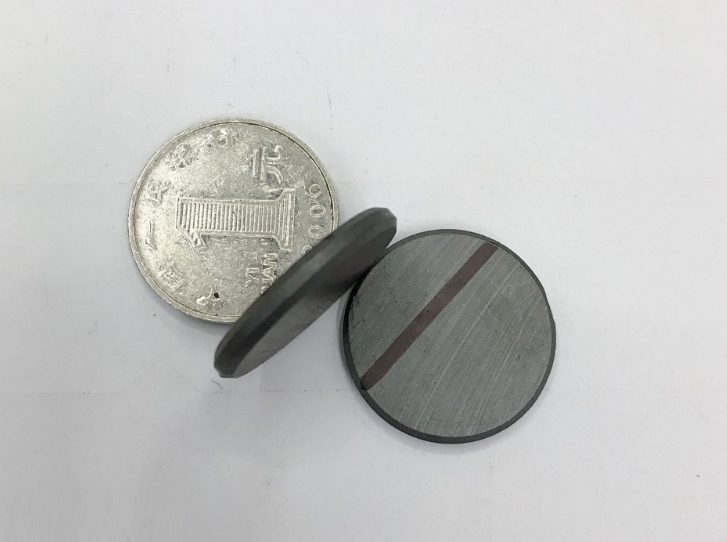"Y30" and "N35" are markings representing different levels in ferrite magnets and NdFeB magnets respectively, which indicate the performance and characteristics of the magnets, and the following multi-pole magnet supplier Courage will briefly introduce the difference between them to you.
1. Y30 Magnets (Ferrite Magnet):
Y30 is a grade of ferrite magnets, also known as ceramic magnets, ferrite magnets have relatively low magnetic properties, but usually have good stability in high temperature environments.Y30 indicates that the ferrite magnet has a certain level of magnetic properties, where "Y" denotes ceramic magnets, and "30" denotes an indicator of magnetic properties, with the higher denoting the stronger magnetic properties. Y30 is a grade of ceramic magnets, also known as ceramic magnets.Y30 is a grade of ceramic magnets, also known as ceramic magnets.
Y30 ferrite magnets are black in appearance, and N35 grade neodymium magnets are usually plated and appear silver-white.

2. N35 magnets (NdFeB magnet):
N35 is a grade of NdFeB magnets, NdFeB magnets are a very powerful permanent magnet material with excellent magnetic properties.N35 grade is more common in many grades of NdFeB commonly used in some low and medium-end applications, in which "N" represents NdFeB magnets and "35" represents the indicator of the magnetic properties, and the higher it is, the stronger the magnetic properties.
Choose N35 or Y30?
Choosing between Y30 and N35 grades of permanent magnet material depends on your specific application needs and performance requirements. If you require a higher magnetic force, then an N35 magnet may be more suitable as it has stronger magnetic properties. If the magnetic performance requirements are relatively low, Y30 magnets may be an affordable option.
If your application requires operation in higher temperature environments, ferrite magnets (such as Y30) may be more suitable because they generally have better stability in high temperature environments. n35 magnets are relatively unstable at high temperatures.
In general, ferrite magnets (e.g., Y30) cost less, while NdFeB magnets (e.g., N35) cost relatively more. Choose the grade of material that suits your budget.
Overall, Y30 magnets (ferrite magnets) have lower magnetic properties relative to N35 magnets (neodymium-iron-boron magnets), but offer better stability in high-temperature environments.N35 magnets have higher magnetic properties, but may be more sensitive in high-temperature conditions. The choice of magnet depends on the specific needs of the application, including factors such as operating temperature, magnetic performance requirements, and material cost.
More magnet grade comparisons;
What are the differences between Y30 and Y35 magnets?
 China Neodymium And Ferrite Magnets Manufacturer & Supplier
China Neodymium And Ferrite Magnets Manufacturer & Supplier 


